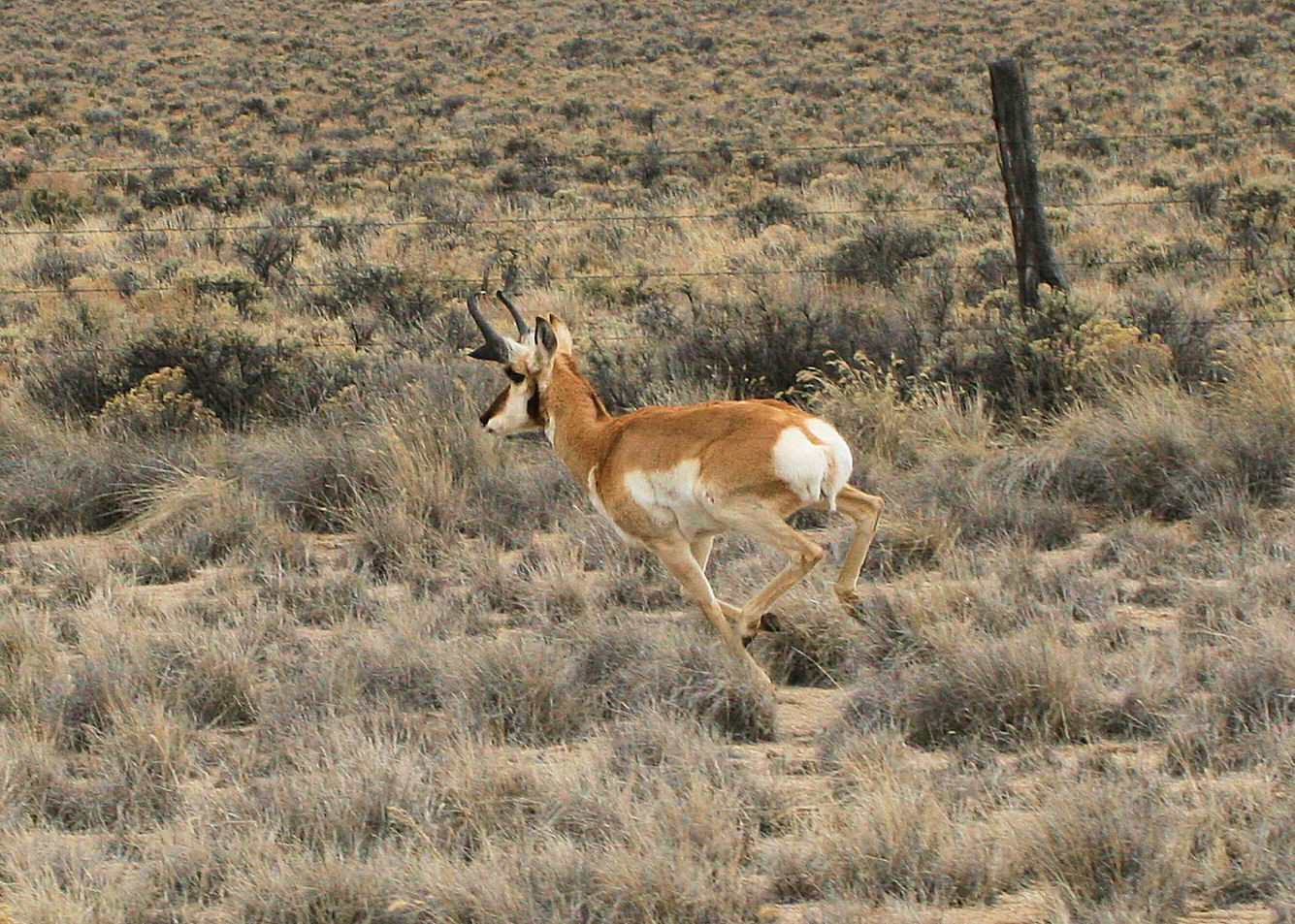Pronghorn
A species of Pronghorn, Also known as Prong buck, Prairie antelope, Sonoran pronghorn Scientific name : Antilocapra americana Genus : Pronghorn
Pronghorn, A species of Pronghorn
Also known as:
Prong buck, Prairie antelope, Sonoran pronghorn
Scientific name: Antilocapra americana
Genus: Pronghorn
Content
Description General Info
 Photo By sandyriverfisher , used under CC-BY-SA-3.0 /Cropped and compressed from original
Photo By sandyriverfisher , used under CC-BY-SA-3.0 /Cropped and compressed from original Description
Pronghorns have distinct white fur on their rumps, sides, breasts, bellies, and across their throats. Adult males are 1.3–1.5 m (4 ft 3 in–4 ft 11 in) long from nose to tail, stand 81–104 cm (32–41 in) high at the shoulder, and weigh 40–65 kg (88–143 lb). The females are the same height as males, but weigh 34–48 kg (75–106 lb). The feet have two hooves, with no dewclaws. Their body temperature is 38 °C (100 °F). The orbits (eye sockets) are prominent and set high on the skull, with never an anteorbital pit. Their teeth are hypsodont, and their dental formula is 0.0.3.33.1.3.3. Each "horn" of the pronghorn is composed of a slender, laterally flattened blade of bone that grows from the frontal bones of the skull, forming a permanent core. As in the Giraffidae, skin covers the bony cores, but in the pronghorn, it develops into a keratinous sheath which is shed and regrown annually. Unlike the horns of the family Bovidae, the horn sheaths of the pronghorn are branched, each sheath having a forward-pointing tine (hence the name pronghorn). Males have a horn sheath about 12.5–43 cm (4.9–16.9 in) (average 25 cm (9.8 in)) long with a prong. Females have smaller horns that range from 2.5–15.2 cm (1–6 in) (average 12 centimetres (4.7 in)) and sometimes barely visible; they are straight and very rarely pronged. Males are further differentiated from females in having a small patch of black hair at the angle of the mandible. Pronghorns have a distinct, musky odor. Males mark territory with a preorbital scent gland which is on the sides of the head. They also have very large eyes with a 320° field of vision. Unlike deer, pronghorns possess a gallbladder. The pronghorn is the fastest land mammal in the Western Hemisphere, being built for maximum predator evasion through running. The top speed is very hard to measure accurately and varies between individuals; it can run 35 mph for 4 mi (56 km/h for 6 km), 42 mph for 1 mi (67 km/h for 1.6 km), and 55 mph for 0.5 mi (88.5 km/h for 0.8 km). It is often cited as the second-fastest land animal, second only to the cheetah. It can, however, sustain high speeds longer than cheetahs. University of Idaho zoologist John Byers has suggested the pronghorn evolved its running ability to escape from extinct predators such as the American cheetah, since its speed greatly exceeds that of extant North American predators. Compared to its body size, the pronghorn has a large windpipe, heart, and lungs to allow it to take in large amounts of air when running. Additionally, pronghorn hooves have two long, cushioned, pointed toes which help absorb shock when running at high speeds. They also have an extremely light bone structure and hollow hair. Pronghorns are built for speed, not for jumping. Their ranges are sometimes affected by sheep ranchers' fences. However, they can be seen going under fences, sometimes at high speed. For this reason, the Arizona Antelope Foundation and others are in the process of removing the bottom barbed wire from the fences, and/or installing a barbless bottom wire. The pronghorn has been observed to have at least 13 distinct gaits, including one reaching nearly 7.3 m (8.0 yd) per stride. 
General Info
Lifespan
7-15 years
Diet
Pronghorn primarily feeds on a variety of grasses and shrubs, particularly forbs and sagebrush. Capable of consuming up to 3000 grams of food daily, they select plants based on moisture content, adaptively focusing on succulent growth following rains.
Appearance
Pronghorn are medium-sized mammals with slender, deer-like bodies. Their fur is tan or light brown with a white underbelly, and males have a dark patch on the throat. Unique to the species are two pairs of straight, pointed horns on males, one longer than the other. Females also have horns, though smaller. As a desert dweller, pronghorn has large eyes and ears for increased sensory perception.
Behavior
Pronghorn is noted for its speed, able to reach up to 55 mph, primarily for evading predators. They are diurnal, grazing in the morning and late afternoon. Males hold territories during breeding season, using visual and olfactory signals to ward off rivals. This species exhibits a survival behavior known as pronking to divert predatory threats.
Population
Stable